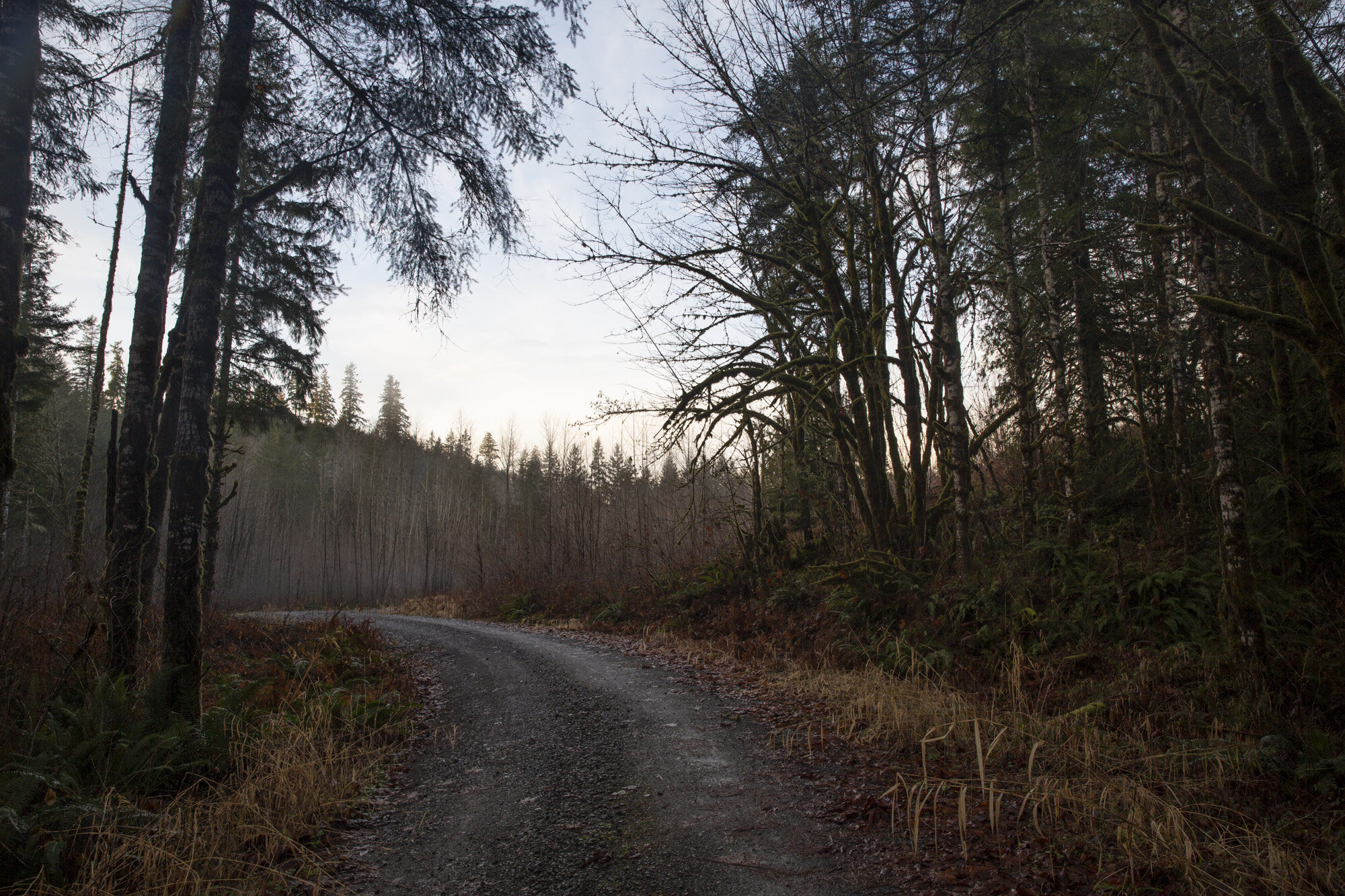Text by Nyn Tomkins. Photos by David Moskowitz
We smelled them before we heard them. A pervasive, mild rotting smell that hung in the air as we approached the stream. Then the quick sharp sound of splashing water. Not the kind of splashing you hear from kids in a swimming pool. This splashing had a cadence, a focus, a determination behind it.
Broken clouds overhead let occasional unexpected shafts of sunlight filter into the forest--rugged stands of second and third growth temperate rainforest on the western slope of Washington’s North Cascades. The winter rain had been consistent for days. A sudden break in the downfall one afternoon prompted a trek to a nearby tributary of the Tolt river to look for salmon. The salmon make their move when it’s raining - the rivers and streams swell easing passage upstream.
Quietly gazing into the shallow stream, we saw flashes of ruddy red and patches of white. A handful of coho salmon rested in a stretch of the creek between two small waterfalls. They were beautiful, sleek and strong despite showing ample signs of their epic adventure upstream from the sea. A female on her redd (spawning site) with an accompanying male was just out of sight under a vine maple branch hanging over the stream.
We watched them for a long while, entranced by the primeval fecundity ritual playing out before us.
For a moment we forgot where we were. An industrial forest. A heavily fractured landscape. A creek crossed by numerous road culverts. A small streambed surrounded by large patches of clearcut with the tiny, legally required, strips of streamside forest remaining. It feels easy to be awed by salmon. How do any of them manage to get back to their spawning grounds with all the barriers we’ve added to their journeys?
I’m reminded of something Gisele Martin, a Tla-o-qui-aht First Nations member and cultural educator, told us in a recent interview on the importance of salmon to her people-
“All the other plants and animals are also in deep relationship with cedar. … My house is made of cedar. The traditional dugout canoes that I use for youth trips and for continuing our cultural life ways, they’re made out of cedar, and that cedar is made out of salmon. It’s not just a question of food … without salmon the forest will go hungry.”
Western civilization worships hierarchy and dichotomy. Fish are inferior to mammals. Fish have a “less advanced” nervous system, they are “unintelligent” and “don’t feel pain” the way we do. Their behaviour is driven by “instinct” rather than intellect. But in 2014, Culum Brown published a review paper on the intelligence and pain perception of various fish species. It turns out that many scientists around the world have shown that fish do in fact feel pain and have a level of intelligence at least equal to - sometimes greater than other vertebrates. Findings that I’m guessing many indigenous and earth-centred people who lived with salmon wouldn’t find that surprising at all.
It feels easy to be awed by salmon. Salmon has been growing forests all over the Northern hemisphere for tens of thousands of years. What other creature has it’s pulse so firmly on life in the northern hemisphere? In many ways, it is the actual pulse of these lands ebbing and flowing along the watery arteries of the continents back and forth from the oceans. What other creature has been so intimately tied to nurturing so many others? Like my ancestors - from Ireland and various places in Western Europe. Wherever salmon exist, they are intimately tied to place, people and culture; in stories and myths.
In the Fenian Cycle of Irish Mythology there is the Salmon of Knowledge, “bradán feasa” in Irish Gaelic. In one story of this cycle, the hunter-warrior Fionn mac Cumhaill eats the Salmon of Knowledge and gains all the knowledge of the world. An attribute that serves Fionn well in other adventures in the Fenian Cycle. Salmon also appears in the story of Tuan mac Carill. In this myth Tuan, an immortal and a hermit, lives through the history of Ireland. He recounts how, over the centuries, he has shape-shifted into four different animals to witness the various invasions of Ireland. The four animals are stag, boar, hawk and salmon. As salmon he is caught by the chieftain Carill, cooked and fed to his wife. Tuan passes into her womb and he is born as a human once again. Salmon helps me feel connected to my ancestors. How vital were salmon to their existence and to the existence of the great forests of Europe?
We returned to that same spot a week later. Only a couple fish remained. Where the redd stood nestled under the vine maple was now the body of a large decaying male coho. For me, it’s easy to feel their significance, intelligence and beauty, even as they decay. Maybe especially as they decay. I feel inspired and hopeful. If such a “primitive animal”, can nourish an entire ecosystem, what might we be capable of, if only we humans can remember our place in the world?
Nyn Tomkins is a chiropractor and naturalist. She lives on Vancouver Island, British Columbia.












